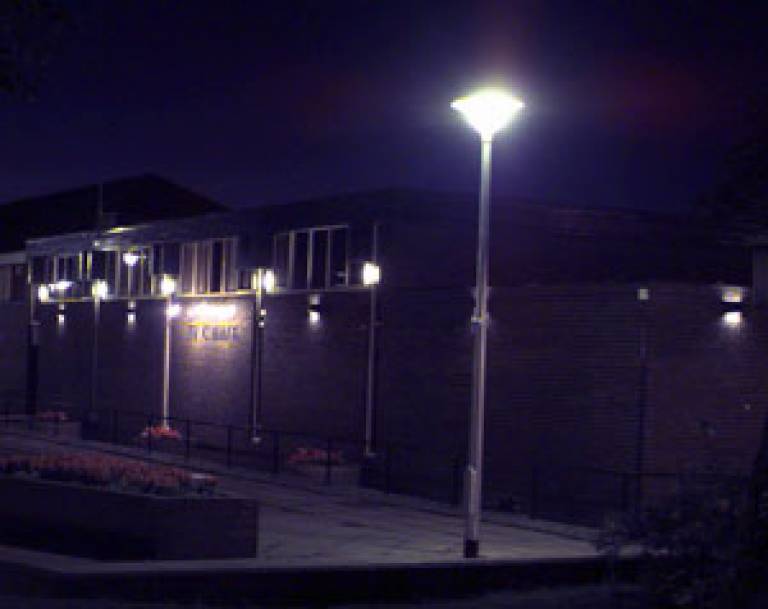White light
2 June 2004
White light is twice as effective for recognising the face of someone else at a distance, compared to standard yellow light.

This is the result of an innovative new study led by Professor Tadj Oreszczyn, Director of Environmental Design & Engineering at UCL's Bartlett School of Graduate Studies. The study examines the advantages of white light over yellow light, which is commonly used to illuminate streets.
Professor Oreszczyn says: "Yellow lights, which are generated from high pressure sodium lamps, are perceived to be energy efficient, but the truth is you need more yellow light to be able to see other people's faces properly in pedestrian areas. We found that you need about half as much white light as yellow to be able to recognise faces at a given distance, with an energy saving of somewhere between 40 to 45%."
This is the first comprehensive study of the impact of lighting on urban centres, and on the pedestrians using those spaces. A large-scale design intervention was developed in the town centre of Sutton Coldfield, as well as a pilot study of the urban environment surrounding Swinton. This was supported by a parallel laboratory investigation, which explored the importance of light source colour for facial recognition.
The study found that people aged over 45 need 30% more light than those under that age. Professor Oreszczyn says: "This may explain why the fear of crime at night time is greater among the elderly. Our study has shown that normal standards of lighting, if applied using high pressure sodium lamps, will not provide the necessary level of lighting to alleviate fear."
The project, 'Urban Light: Sustainable Lighting for Town Centre Regeneration', was funded by the Economic & Social Research Council (ESRC).
To find out more about Professor Oreszczyn, use the link below.
Link: Professor Oreszczyn
 Close
Close

